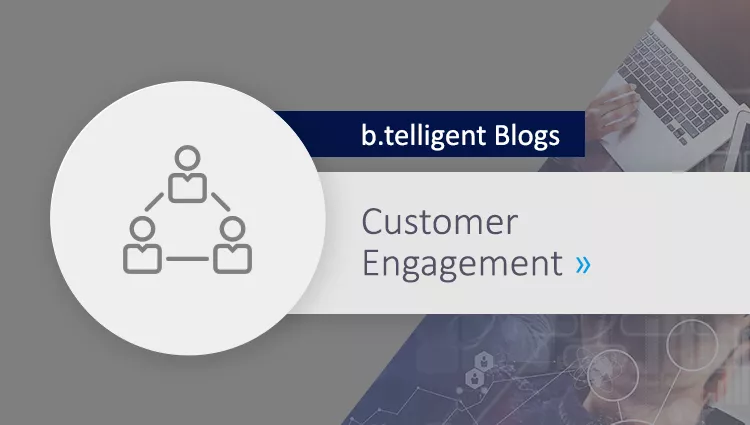Marketing resource management (MRM) is still too little known among marketers. This is unfortunate, because MRM software can take your marketing planning and management to the next level – provided you find the right software for your needs. To allow orientation in the MRM market, b.telligent as a technology-independent consultancy company has analyzed and classified relevant providers to create a market overview offering assistance, function overviews and provider profiles: b.telligent's MRM market overview.
What actually is marketing resource management?
Whether B2B or B2C – marketing campaigns are becoming more and more elaborate and complex, while taking place on an increasing number of channels. This poses new challenges to marketing experts, especially in terms of the efficiency of planning and implementation as well as the associated collaboration and management, as the pressure on marketing increases constantly.
As in many other areas, the solution to the problem is as follows: Software, automation and process optimization. More specifically: Marketing resource management. MRM tools solve problems in marketing management to make it and the associated operations more efficient.
b.telligent defines MRM as software-based management, coordination and control of an enterprise's marketing activities with the aim of maximizing standardization and integration of marketing processes.
Which problems does MRM solve?
At many enterprises, planning of marketing activities and budgets, management of associated workflows and monitoring of operations are performed not with the help of an integrated, central marketing management system, but separately from each other by individual departments or sub-departments. The problem here: Many processes within marketing, and also between marketing and other departments such as sales and service provision, are neither automated, nor are the corresponding data sources interlinked, but instead located in structures known as silos.
In view of the large number campaigns and channels today, marketing departments frequently lack a central overview, not only of the status of their activities in often parallel campaigns, but also of the associated key figures and budgets. As a result, marketers have to obtain campaign-relevant information with the help of numerous, manually maintained Excel lists which are often manually consolidated and merged, this involving high expenditure in terms of time and costs as well as maintenance errors.
An overview of the most common problems in marketing where MRM solutions help can be found in b.telligent‘s MRM market overview which can be download from here.
[Translate to English:]
What characterizes the market of MRM providers?
The market for high-performance solutions consists of a large number of potential providers with different profiles and functional emphases. Many solution providers have their origins in one of the following main areas:
- Digital asset management
- Workflow / project management
- Planning systems
- Budget management
- Marketing portals (especially in the B2B context, merchant access to manufacturer-initiated content)
- Performance optimization
Nevertheless, or especially as a result, b.telligent does not actually consider every software solution on the market as MRM software.
The provider market is analyzed from the following two perspectives:
Firstly, just functional. Potential solution providers can be narrowed down by means of must-have and nice-to-have criteria defined by b.telligent. You can find out exactly what these are in b.telligent’s market overview.
Based on their attributes within six functional clusters, the strengths of the vendors are presented with the help of a spider-web visualization. These clusters are:
- Modularity
- Data management / channel integration
- Planning (campaigns, budgets, resources)
- Workflow and collaboration management
- Digital asset management
- Monitoring / reporting
Secondly, b.telligent characterizes the market in a vendor landscape, with the vendors positioned along two classification dimensions (axes):
- Customizability: One axis is formed here by business perspective in the sense of feasible use cases and requirements which can be fulfilled. Can the solution be flexibly tailored to special needs, and is this mainly done through configuration (i.e. developer know-how is not necessarily required) or coding (developer/programming know-how required)?
- Integrated suite approach: This axis indicates the complexity of technical feasibility. Does the solution involve a stand-alone product on the market and follow the best-of-breed approach, or is it a (technically related) part of an integrated suite approach?
The market overview reveals all the details underlying each axis and shows the vendors’ positions on a matrix.
Which components does an MRM solution consist of?
MRM solutions can generally be divided into three components: Planning, workflow and monitoring components. The next sections of this blog series tell us more about these individual components. We will begin with a powerful planning component.
The market of MRM providers is large, requirements for suitable software often being very detailed. To learn more about the capabilities of MRM software and specific functions associated with each provider, you can download the MRM study from here.











